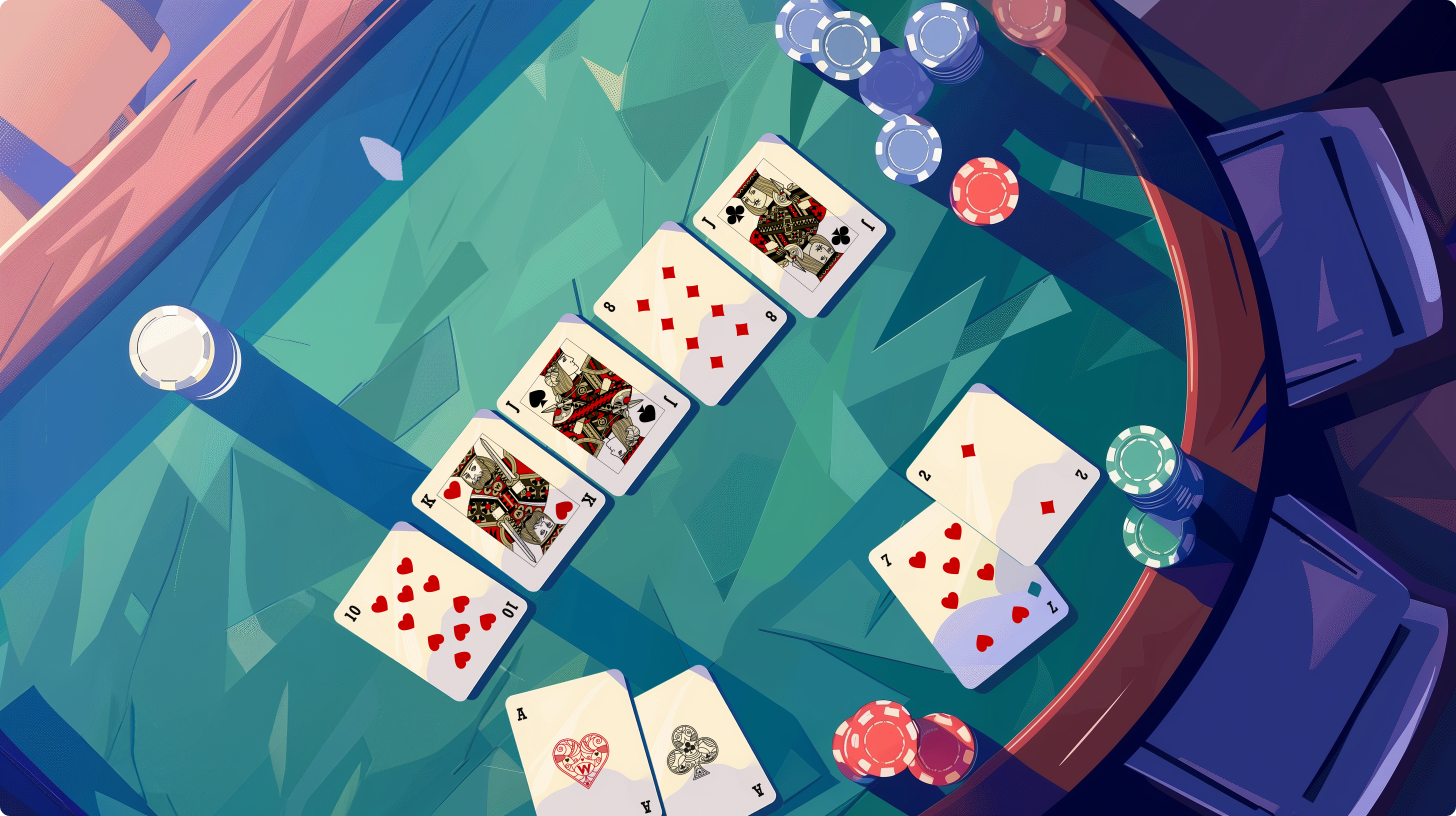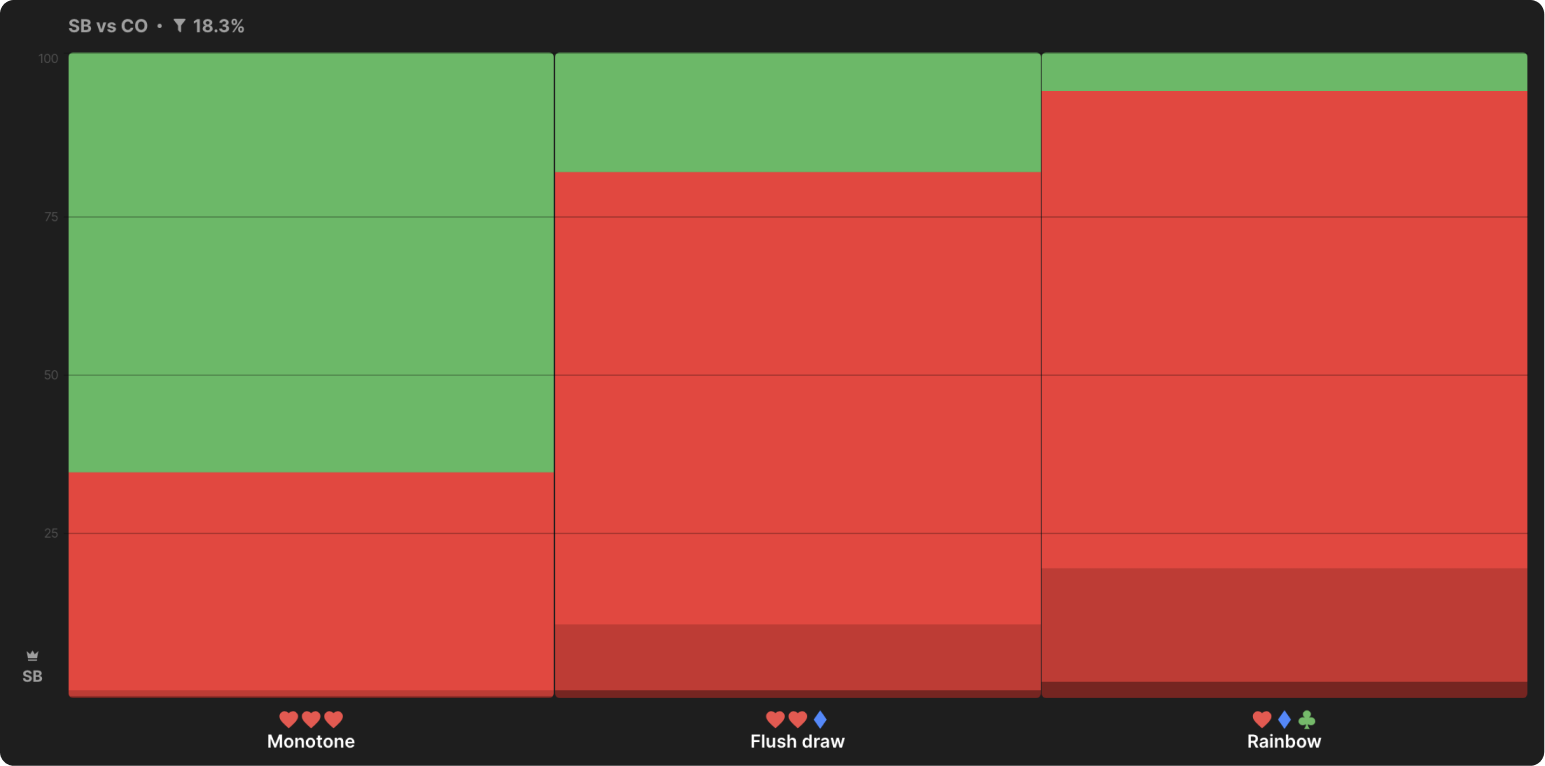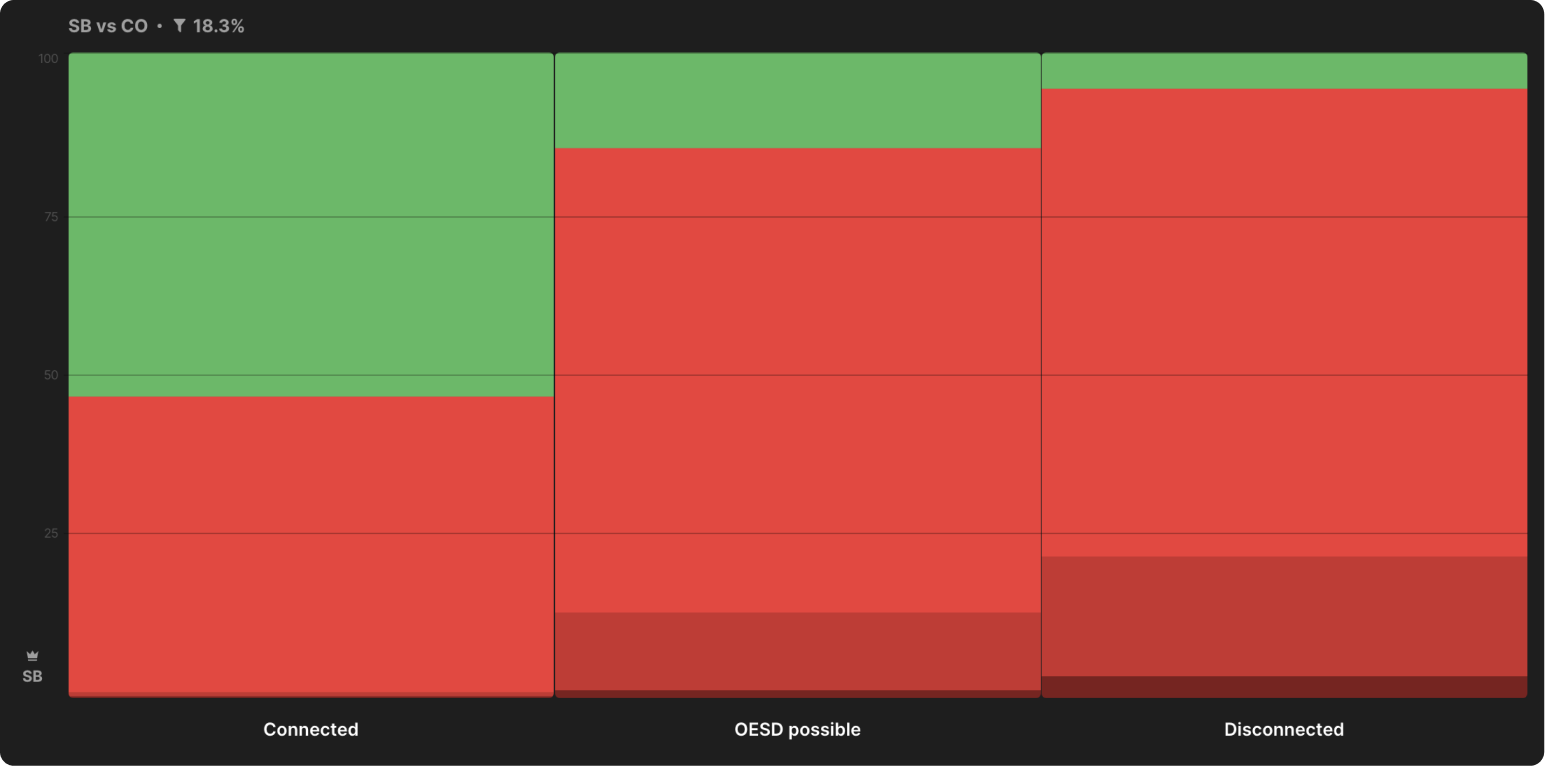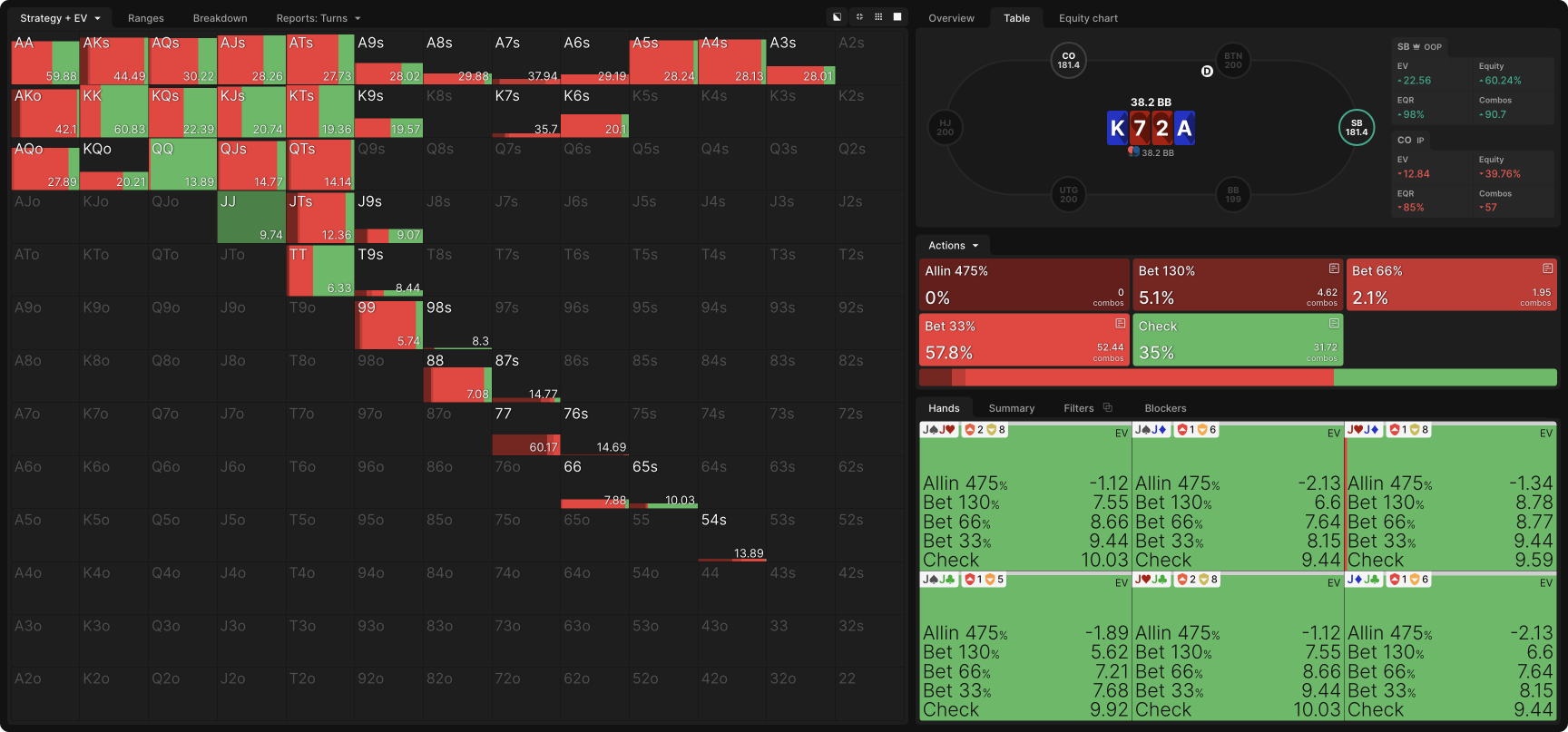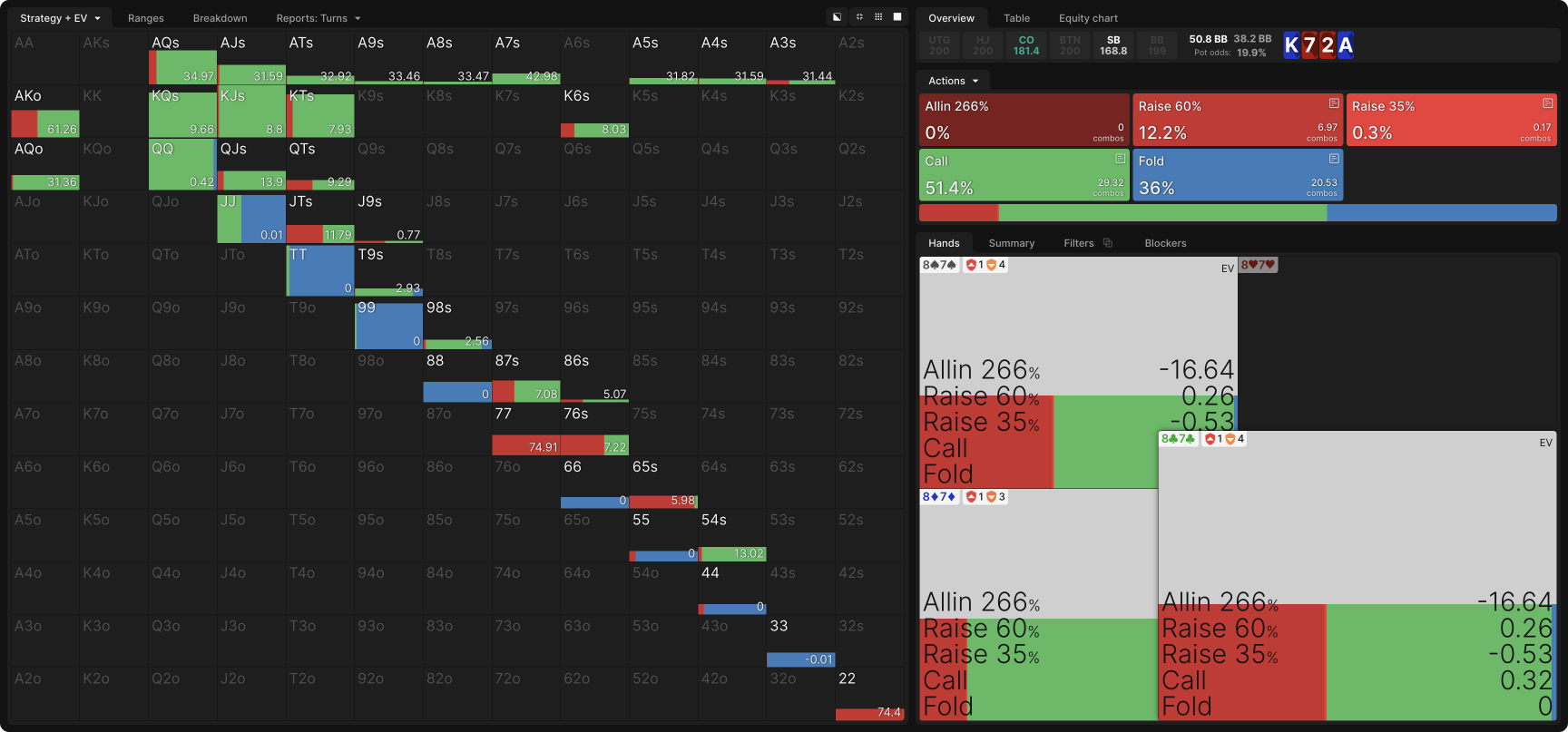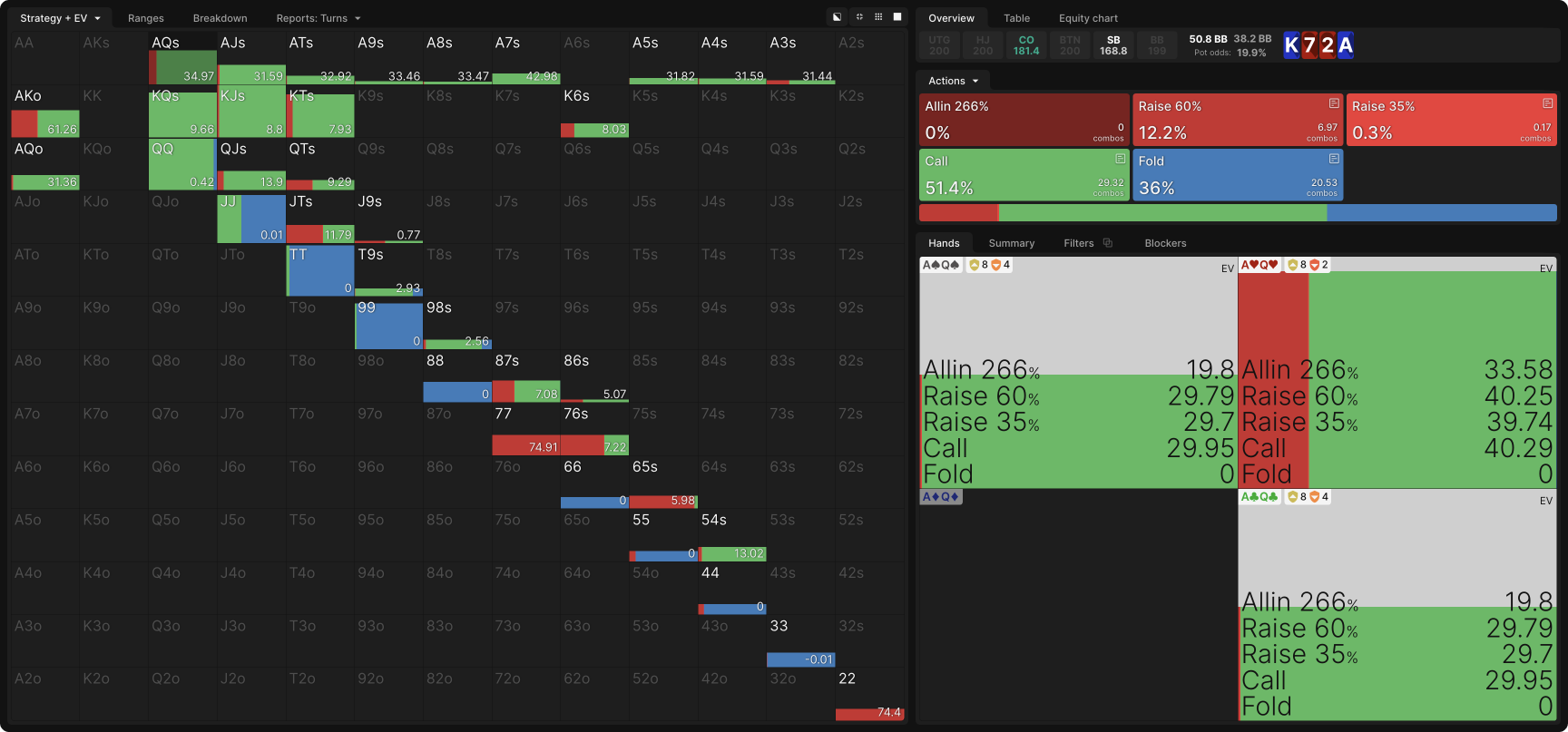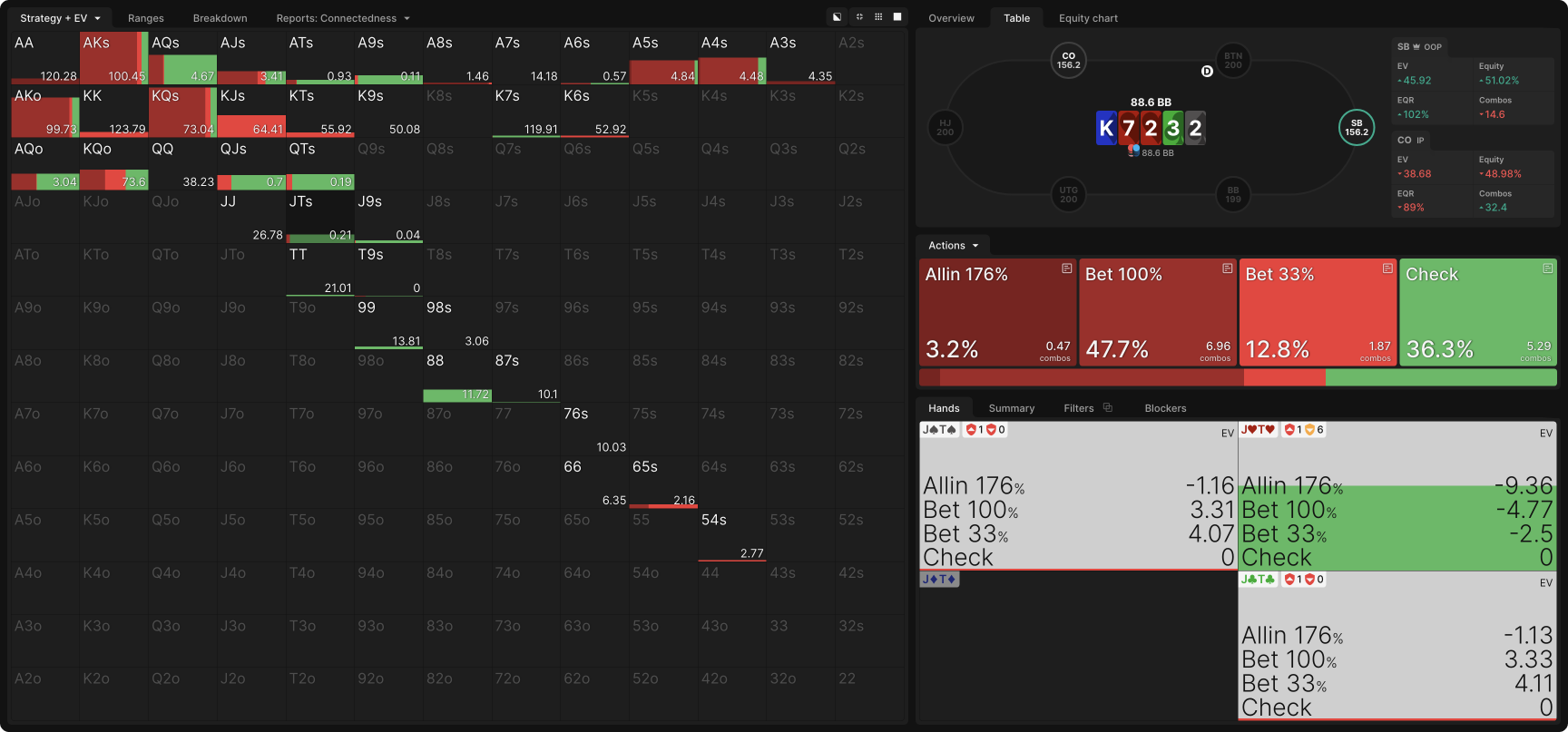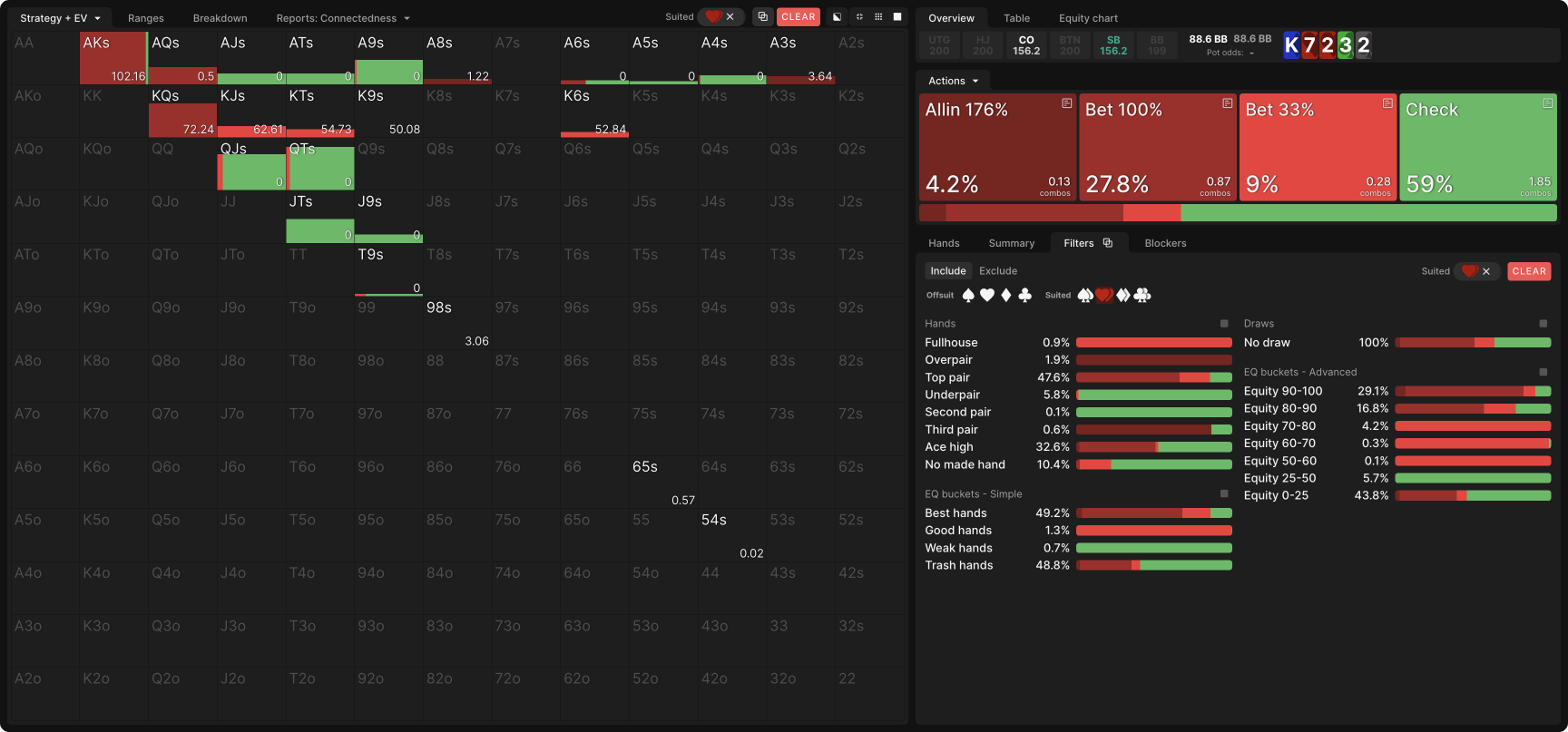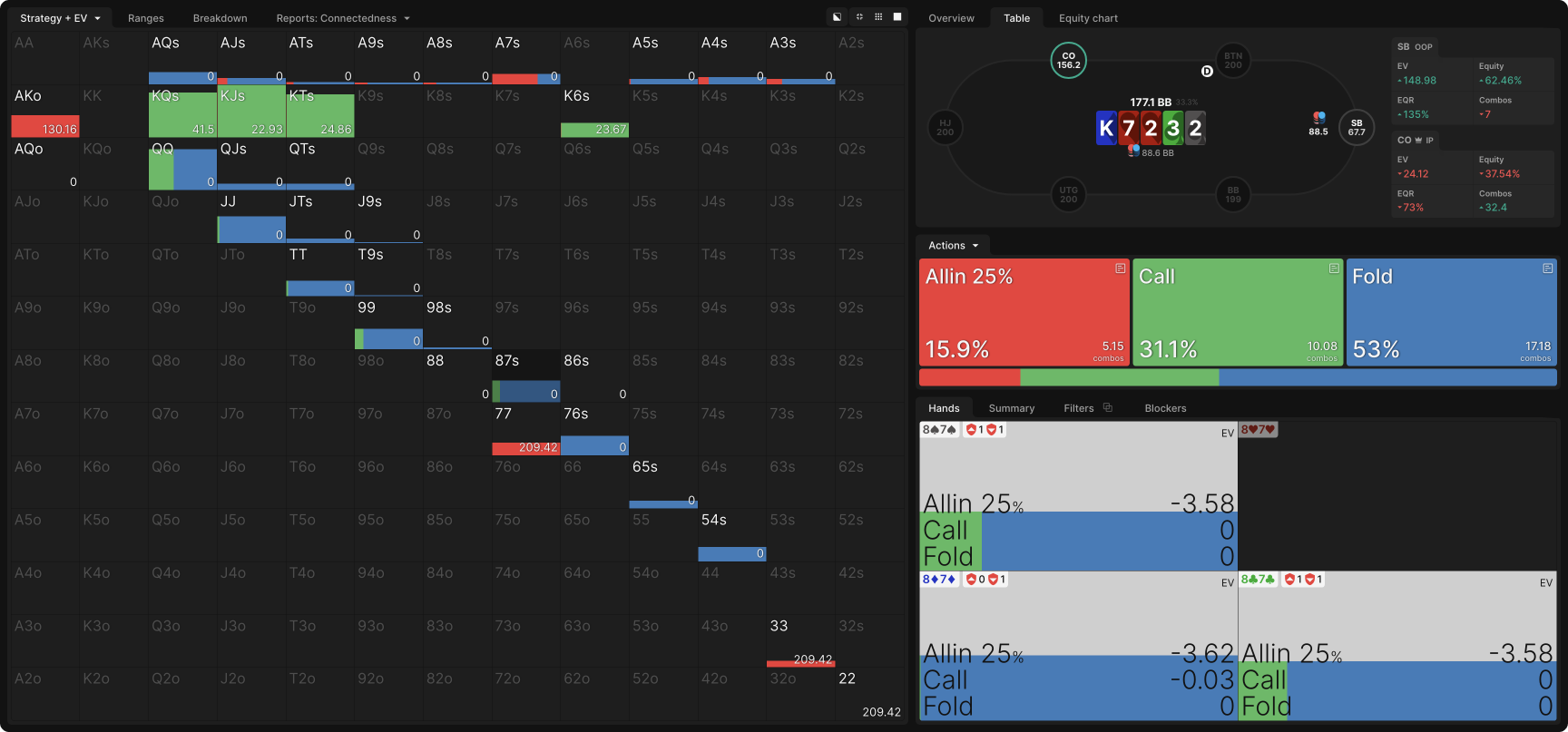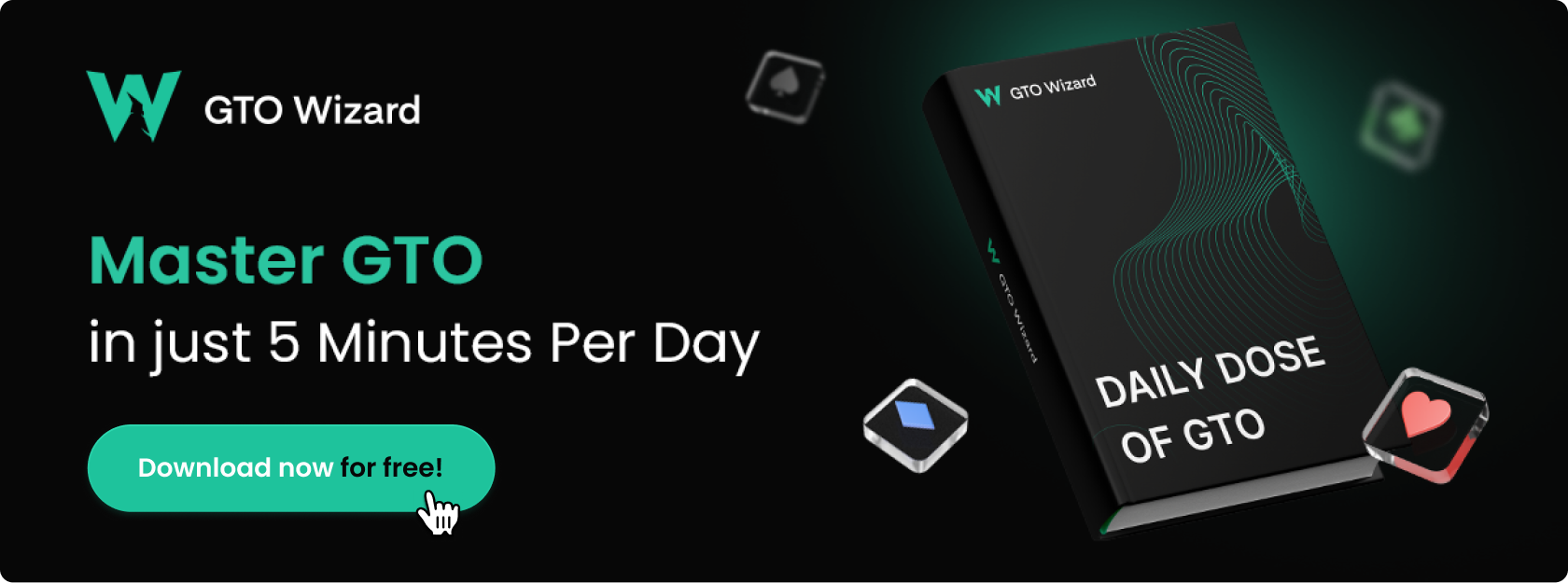Building Exploits From Showdown
Understanding how and when to exploit opponents at a live poker table is a delicate affair. It’s easy to get carried away based on appearance. For example, silver-haired Mister ‘Old Man Coffee’ is unlikely to be bluffing after 3-betting preflop and triple-barreling all-in on an AK-high board. Similarly, we may think that ‘Young Punk With Hoodie And Sunglasses’ may need to be called down a little lighter after check-raising the turn and shoving the river.
These are often just guesses based on certain perception biases that are unique to each individual. When we evaluate spots like these, we often think back to previous situations where we faced similar player types when we had a tough decision.
Without any other information, this can be a solid start. However, there’s one bit of information that should take priority over all else once we gain access to it, and that’s the hands we see at showdown.
Not Always a Game of Mixed Frequencies
In a GTO environment, there is often a great deal of mixing on both the flop and turn. We won’t always be able to look at a hand revealed at showdown and conclude that our opponent made a mistake.
Instead, what we want to do is start looking for hands that should never be in a player’s range. This can clue us in on their strategic approach, allowing us to search in a more directed way for the corresponding exploits that we should integrate in our strategy. Let’s move on to our first example to see this idea in action.
Example 1: Mr. ‘I Won’t Show Weakness’
In a 200bb 6-handed cash game at the local casino, we open the CO for 2.5bb with K♠J♠, and our opponent who just sat down makes a 3-bet to 11bb from the SB. With our hand, we’re happy to just call and evaluate postflop with the positional advantage.
The flop is K♦7♥2♥, giving us top pair with no redraws. Our opponent quickly makes a c-bet for 7.6bb, about ⅓ the size of the pot. While we could raise with KJ occasionally, we feel like we should mostly just call and be a bit more cautious against an unknown player. So we call and go to the turn.
The turn brings the A♦, bringing a plethora of possible draws. Our opponent continues the aggression, betting ⅓ pot once again (about 13bb into a 38bb pot). We’re not thrilled seeing an overcard that pairs up a portion of villain’s flop c-bet range. However, this seems like too good a price to fold. Our opponent still could have a lot of straight or flush draws and be representing the Ace, so we go ahead and call once again. To the river, we go.
A rivered 6♣ bricks all possible draws. Our opponent checks, and we decide that it’s most prudent to check behind with our second pair. Expecting to see perhaps a weak Ace or some sort of busted draw that gave up, we’re pleasantly surprised when our opponent turns over JJ. We quickly show our KJ and claim the pot.
“I didn’t want to show weakness and face a big bet,” you hear him whisper to his friend standing behind him. His friend nods, and you nod too.
Most players will look past this pot since they didn’t really have a tough decision to make with their hand. However, a crucial piece of information that was disclosed at showdown should alter our strategy against this player in future jousts.
Most players will look past this pot since they didn’t really have a tough decision to make with their hand. However, a crucial piece of information that was disclosed at showdown should alter our strategy against this player in future jousts.
Hunting High and Low… for Exploits
Our opponent made a standard preflop 3-bet with his premium holding.
On this K72tt flop, our opponent is allowed to make a bet with his entire range. Most King-high flops are very good for the preflop 3-bettor. However, there are some flops where the aggressor needs to be a bit more cautious, such as monotone flops and connected straight boards like KT9, where the 3-bettor has to do more checking.
So, betting JJ on K72 is not out of the ordinary. What about the turn?
While the turned Ace is one of the best cards for SB’s range overall, it’s not a situation where they should continue betting their entire range. Their Ace-high bluffs on the flop can certainly continue betting for value now, but we need to consider the big picture of what happens when SB bets again on the turn.
CO is likely going to only continue against SB’s turn bet with a ‘bluff catcher’ range comprising King-x and Ace-x as well as some high-equity draws. Since SB only bet ⅓ pot on the flop, it’s perfectly reasonable for the CO to have some Ace-high backdoor floats that turned top pair as well. The SB should expect CO to fold almost all their pocket pairs.
SB’s value hands want to continue betting for value against one pair hands in CO’s range that will call. These include most Ace-x and King-x with the best kickers like KQ and KJ. SB also wants to get folds from hands like pocket pairs. Hands like QJ make a great bluff since they’re currently losing to a hand like 88, but SB will be able to get folds from those hands if they continue the aggression.
Does it make sense to bet a hand like JJ or even QQ in this scenario? The analysis we just made for SB does not contain any reasons to bet these hands. They would fold out hands they dominate and mostly get called by hands they only have 2 outs against. The solver seems to agree; suggesting that JJ is a pure check—meaning betting is a clear deviation from GTO standards.
In solver terms, betting all combos of JJ on the turn loses SB an average of 1bb of EV. In a 5/10 game, that’s the equivalent of giving $10 to our opponent.
The burning question is: how can we modify our strategy to maximize EV against this opponent based on what we retroactively learned about their (turn) strategy at showdown?
Since we’re already continuing with all our King-x and folding worse pocket pairs, we’re already doing well for ourselves by simply not folding second pairs. However, I would suggest that we can do better by bluff raising more often. Against an opponent who bets too many medium-equity hands out of position on the turn, raising will yield higher EV for bluffing hands, assuming they fold those medium-equity holdings. Since their range is weaker than what GTO recommends, we should logically expect more folds.
Against an OOP opponent who bets too many medium-equity hands on the turn,
raising will yield higher EV for bluffs (if those medium-equity hands fold).
In this example, a hand like 8♣7♣ is used as a turn raise by CO slightly less than half the time. We could start by increasing the frequency of our raises with this hand class.
New Player Gets Substituted In: StickyHands
Caveat: A few player types (such as calling stations) will be stubborn and call down instead of fold a bottom-range hand to our raise. Against such opponents, we should instead start value raising more thinly (with our best calls). In this hand, the solver only raises A♥Q♥ with the flush draw for value occasionally, with the other value raises starting from two pair and sets. We can consider mixing in some raises with hands like AQ and AJ even without redraws against someone who doesn’t fold.
Example 2: Mr. ‘I Won’t Give Up’
In a 200bb 6-handed cash game at the local casino, we open CO 2.5bb with Q♠Q♣, and our opponent who just sat down makes a 3-bet to 11bb from the SB. While we could 4-bet, we decide that being this deep it might be better to take a flop in position and just call. The flop is K♦7♥2♥.
Our opponent bets around ⅓ pot (7.6bb into 23bb). While we don’t love the flop, we call and go to the turn.
The turn reveals the 3♣, a total blank this time, but giving some equity to some draws like A4 and A5 that could be in our opponent’s range. They continue the aggression, betting 25bb into a 38bb pot, about ⅔ the size of the pot. Folding is now an option, but we decide that there are enough draws in our opponent’s range for us to continue. With the benefit of position on the river, we put in chips to make the call.
The rivered 2♠ bricks all draws. Our opponent thinks for a while and quickly makes a pot-sized bet (88bb into 88bb). Having studied this spot before, we know that our hand is just a bluff catcher. Our opponent represents KQ or better for value, and we don’t have good blockers. In essence, our hand is indifferent between calling or folding in GTO world.
However, this being real life, we tank for three minutes, during which our opponent takes four sips of water, pretends to make small talk to the dealer, and orders fish and chips and an iced tea from the waiter. Deciding that our opponent is acting strong, we make a marginal call, and our opponent tables J♥T♥ for a missed flush draw. “Had to bet the river,” he mumbles while you table your pair of queens and scoop the pot.
Putting live reads aside, what does showdown teach us?
Is Our Opponent Over-Bluffing?
Plugging the hand into the solver, we see that our opponent’s play was standard until the river. For us, we could have folded our specific hand a small percentage of the time on the turn. We could also have 4-bet preflop a low percentage of the time. Otherwise, our postflop play is standard, and our hand can be either a call or a fold on the river.
On the river, J♥T♥ is a pure check by solver standards. Betting 100% pot produces a loss of almost 4.8bb of EV for the SB.
If we filter by heart draws that missed, the solver is giving up a large percentage of the time:
Bluffing with Queen-x, Jack-x, Ten-x, and 9-x of hearts is particularly bad because the solver expects QQ, JJ, TT, and 99 to fold a lot against a pot-sized bet.
What I would, therefore, deduce from this showdown and what consequently informs how we should build our exploit(s) is the following:
- Villain’s holding consisted of very poor blockers, both for the missed flush draw and for the middling cards that block the pocket pairs that they would have gotten to fold, in theory. So, there either there was no consideration for card removal effects at all or they did notice but there was no respect for them.
- Betting this river with this hand is considered over-bluffing by solver standards, so some of our indifferent mixed calls (such as QQ) can be promoted to pure calls—assuming our opponent doesn’t change their strategy.
- Despite our opponent displaying an aggressive tendency by firing the river with a missed draw in this hand doesn’t mean they necessarily will do the same in future hands in that same session. They’re very likely to feel caught with their hand in the cookie jar (regardless if that feeling is underpinned by theoretical knowledge). With the incentive of an image that’s worse for future bluffs, they could shy away from them (for the time being).
- Although the hand choice was poor, our opponent used a good bet size on the river, understanding that they were polarized and that our range was composed of bluff catchers. This bet size should yield him higher EV than using a middling bet size, like ½ or ⅔ pot. That said, if we see him using half-pot with AK in this spot, that’s something to take note of as well as it gives us some insight into what bet sizes he uses for his value region.
- Tracing showdown back to preflop, we now know that J♥T♥ is in the preflop 3-betting range. This could be a clue to their overall preflop strategy since some live players would have flat-called with this hand. So, we have some reason to believe he’s using a 3-bet or fold strategy with a linear range (but we aren’t sure of this yet).
Conclusion
Poker players often make table talk and say, ‘I would have folded’ or ‘I would have bet the river,’ but the only real piece of information that counts is what you see with your own eyes at showdown.
Learning From the Past
- What actions did our opponent take with his hand? Was there a clear mistake that we can now identify? For example, did they bet a hand that should have only checked?
- What bet sizes were used? Does he make bets based on the strength of his hand? Does he use range-bets when he understands that his range can support it?
To Better Your Future
- Think logically about how showdown informs you about their strategy and, consequently, about which exploits will be effective against them in the future.
- It’s also important to understand that every player comes from a long line of ancestors who all had to adapt to survive. So even the worst poker players have that trait of analyzing their environment and making changes based on it wired into them by nature. If someone calls us on the river 10 times and we show the nuts 10 times, we can expect them to start folding a bit more in the future.
Wizards, you don’t want to miss out on ‘Daily Dose of GTO,’ it’s the most valuable freeroll of the year!
We Are Hiring
We are looking for remarkable individuals to join us in our quest to build the next-generation poker training ecosystem. If you are passionate, dedicated, and driven to excel, we want to hear from you. Join us in redefining how poker is being studied.

Author
Darren Wee
Darren is a mid to high-stakes player/coach with a passion for writing and strategic analysis. He combines a strong fundamental knowledge of GTO heuristics with exploits against opponents who deviate from an optimal baseline.
